You shouldn’t wait until your HVAC system breaks down to arrange for someone to come and inspect it.
Regular HVAC maintenance can actually prevent issues in the long run and will prolong the lifespan of your equipment.
This involves the periodic inspection of commercial or residential heating, ventilation, and air conditioning systems, and could prevent costly breakdowns.
These inspections should be carried out by your HVAC contractor or property manager either quarterly or at the very least, bi-annually. Preventive maintenance inspections need to be carried out before peak usage seasons in the summer and winter.
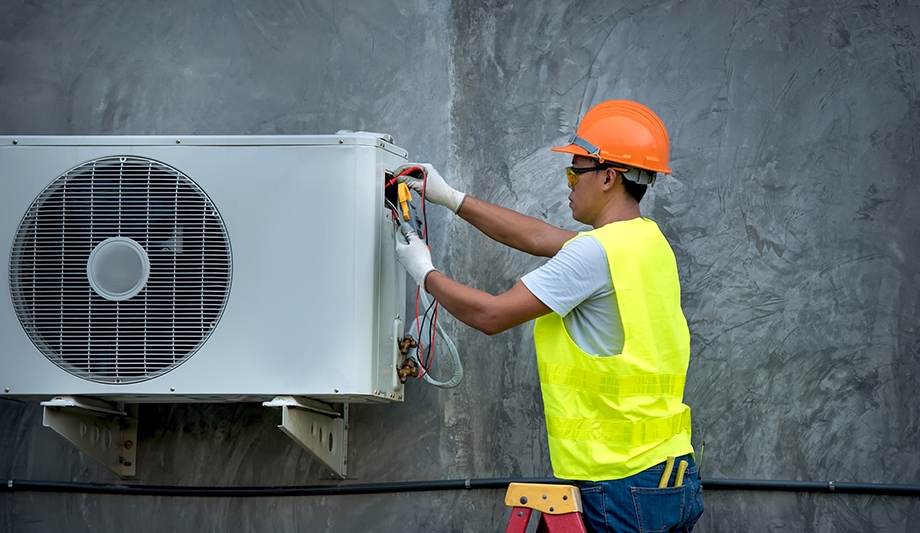
What is an HVAC Maintenance Checklist?
An HVAC maintenance checklist is used to identify signs of an HVAC failure, and to identify and address potential issues to ensure that heating, ventilation, and air conditioning systems are running optimally and cost-efficiently.
After the inspection, the HVAC contractor should provide a report detailing any issues detected and the necessary action required to deal with these. It’s also common for the HVAC inspection report to include a comprehensive cost estimate for any necessary repair or replacement work.
So, what kind of areas are covered during the HVAC inspection? Here are some of the main components that are checked and reported on:
- General wear and tear on any of the equipment
- Parts that need to be cleaned, replaced, or lubricated
- How well motors and controls are operating
- Condition of electrical connections and voltage
- Coil temperature
However, the maintenance plan for your HVAC system will depend on the following factors, so there’s no ‘one-size-fits-all’:
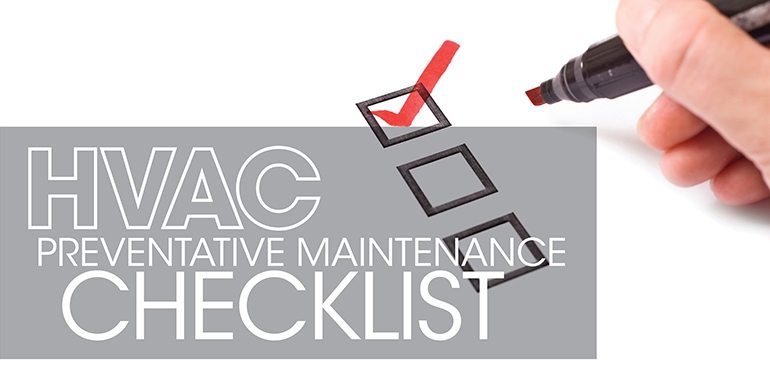
- The age of your HVAC system
- The condition of your HVAC system
- The size of your HVAC system
- Your particular brand of HVAC system
- How much you use your HVAC system
- Where you live
However, as we said, you should definitely be having your HVAC system checked before the peak seasons, as this is when you will be most reliant on it, and, as many of us know, heating and A/C tend to break down when we need it the most!
Here’s what is usually covered in bi-annual preventative maintenance inspections:
Spring/Summer Maintenance Checklist
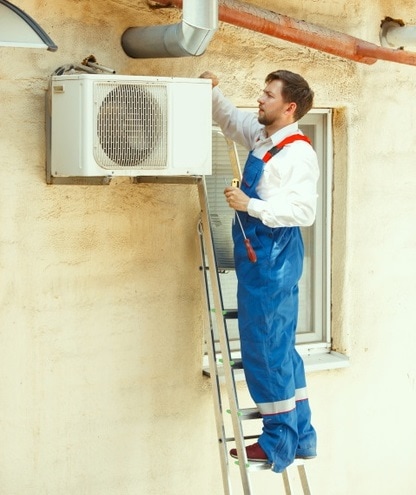
- Replace all filters.
- Clean evaporator coils and condensers.
- Clear clogs and clean drain lines to ensure proper flow.
- Remove any standing water from drain pans to avoid overflows.
- Replace worn pulleys and belts.
- Inspect ducts for dust, mold, or debris.
- Check the refrigerant charge and for any possible leaks.
- Check thermostats and their controls to ensure they are correctly set.
- If necessary, change batteries.
- Check all connections and the electrical system.
- Make sure the fan motor is operating correctly.
- Inspect the blowers and blades to maintain proper airflow.
- Lubricate any moving parts.
- Check the HVAC cabinet for leaks.
- Make sure the HVAC cabinet door is securely closed.
- Remove any debris from around the unit if it is outdoors.
The above list is geared towards your air conditioning unit, as this is what you’ll be reliant on in the warmer months. Preventative maintenance checks carried out in the winter may be similar, or they may be completely different. It depends on whether you use one system to heat and cool your home, or whether you have a furnace.
Fall/Winter Maintenance Checklist
- Replace filters every 30 to 90 days.
- Check the ignition burner assembly.
- Carefully inspect heating elements or heat exchangers. Damage to these components can cause problems with carbon monoxide.
- Inspect the flue system and make sure it is securely attached to the furnace.
- If you own a gas furnace, gas leaks should be checked for.
- It’s also essential to check for gas pressure.
- Replace frayed belts and pulleys.
- Clear drain lines and pans of standing water to prevent overflows.
- Check wiring and electrical connections.
- Lubricate all moving parts such as bearings and motors.
- Check thermostats and controls to ensure they are set at the right temperatures.
- Check the heat pump.
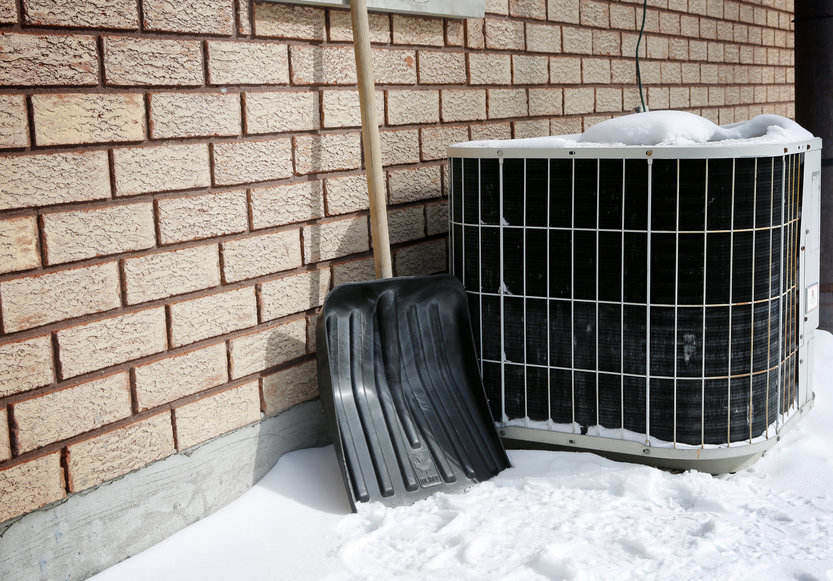
Why Arrange Preventive Maintenance Checks for Your HVAC System?
Improve Energy Efficiency
Regular preventative maintenance checks of your HVAC system can see a reduction in the cost of your energy bills. On the other hand, a system that isn’t running at its peak efficiency will require a lot more energy to heat or cool your home.
In the same way that regular maintenance on your car can see it last longer and cover more miles, regular maintenance on your HVAC system will also result in more efficient energy usage.
Fewer Repair Bills
It’s normal to encounter the occasional issue with your HVAC system, and everyone will have to pay out now and again.
However, preventative maintenance means that your technician can detect faulty parts or issues before they snowball into a bigger issue. For example, you may have to replace a frame belt or evaporator but this is better than waiting until they break completely and result in a far more costly repair.
Therefore, regular preventative maintenance allows your HVAC technician to repair issues when they’re in their early stages and could save you money in the long run.
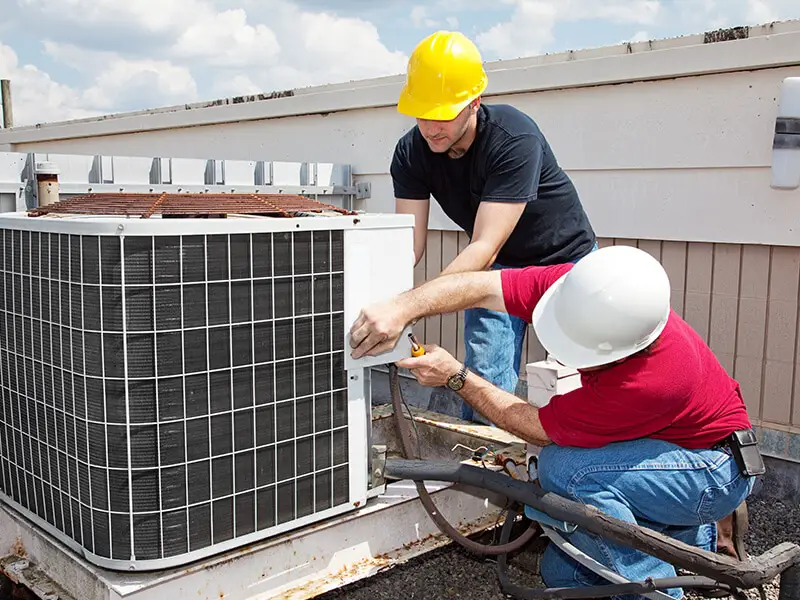
Avoid Catastrophes
As we said, HVAC systems tend to break down when we’re most reliant on them, and nobody wants their A/C to be broken during a heatwave, or to have no heating when you’ve got the family coming round to celebrate the holidays.
Preventative maintenance reduces the risk of catastrophes taking place because they catch problems early on, and therefore, when it comes to the peak seasons, you should be able to rely on your HVAC system to work as effectively and efficiently as possible.
Failing to maintain and check your system throughout the rest of the year means it’s more likely to break down when you need it the most, and, needless to say, emergency fixes are going to be a lot more costly than preventative maintenance checks.
Improve Overall Lifespan
Preventative maintenance of your HVAC system will see you get the most out of your investment. It will reduce the need for you to have to replace the system in three or four years just because you neglected maintenance and the system broke down. A regular maintenance plan will keep your equipment working to the best of its ability and ensures you get the most out of your HVAC system before having to purchase a replacement.
Improve Air Quality
You might not think too much about it, but any mold, dust, and debris that’s gathered inside your HVAC system will be released back into the air. Therefore, regular HVAC maintenance can result in much cleaner and healthier air being circulated around your home or building. Indoor air quality is even more important if any of your family members suffer from asthma or allergies.
Keep Your Family Safe
While breakdowns can be damaging to your finances, more than anything, they can be damaging to your family’s health and can even endanger their lives.
For example, in the event of a short circuit, it’s always possible that a fire could break out.
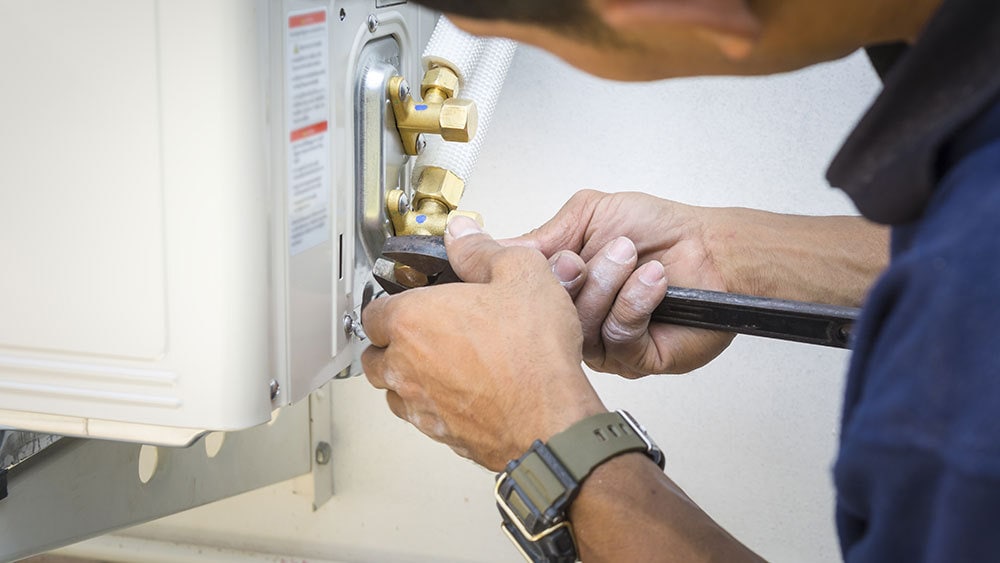
As well as this, if you have separate units for heating and cooling, if a problem develops with the furnace, this could result in issues with carbon monoxide, which, needless to say, is extremely dangerous. Regular maintenance, therefore, keeps your HVAC system running smoothly and efficiently, and ensures you keep your family safe.
Things You Can Do in Between Preventive Maintenance Checks
You must have a professional HVAC technician check your system each spring and fall, however, there are several things you can do to ensure your HVAC system is running efficiently and smoothly in between maintenance checks:
1. Change Your Filters – You should change your filters every 30 to 90 days to ensure your system is working efficiently.
2. Clear Debris Around Outside Units – Leaves and pollen can gather around the HVAC unit and may even get into the interior.
3. Check Refrigerant Lines Monthly – If the lines get worn or develop leaks, you won’t get the comfortable temperatures to heat and cool your home.
4. Keep Your Unit Level – Every two or three months, make sure your unit is level on the ground, and, if it’s placed on pads, ensure these haven’t been dislodged or moved.
5. Eliminate Clogs – Once a year, mix bleach with one cup of water, and pour it down the air conditioner condenser drain to clean out any buildup.
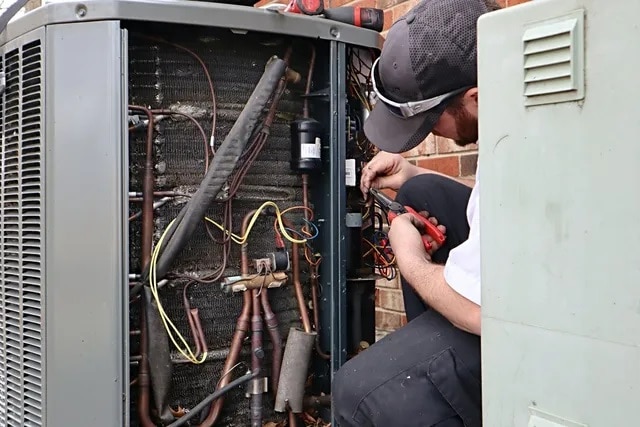
6. In Summer, Turn off Water Supplied to Your Furnace’s Humidifier – There’s no need for this in summer, then when the weather starts to cool in the fall, install a new filter and set your humidistat to around 40 percent humidity before turning the water supply back on.
7. Don’t Shut Too Many Registers – Never shut more than around 20 percent of your home’s registers, otherwise, your system has to work harder to give you the level of heating or cooling you want.
8. If Your Unit Is Indoors, Beware of Odors and Noises – These could be indications of more severe problems.
9. Inspect Fan Blades – Look at the blades every couple of months, both when they’re in motion and when they are stationary, and check for signs of damage and wear. If you notice any issues, let your contractor know.
10. Check Your Home’s Carbon Monoxide Detector – You should replace the batteries in your carbon monoxide detector at the same time you replace the batteries in your smoke alarm.
